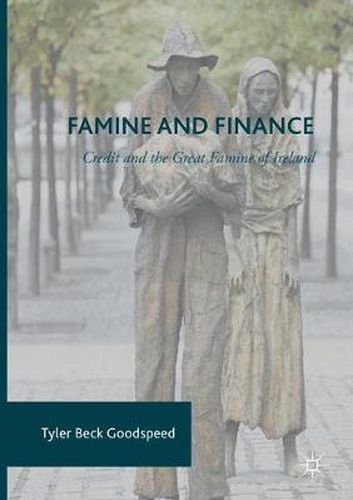Readings Newsletter
Become a Readings Member to make your shopping experience even easier.
Sign in or sign up for free!
You’re not far away from qualifying for FREE standard shipping within Australia
You’ve qualified for FREE standard shipping within Australia
The cart is loading…






This title is printed to order. This book may have been self-published. If so, we cannot guarantee the quality of the content. In the main most books will have gone through the editing process however some may not. We therefore suggest that you be aware of this before ordering this book. If in doubt check either the author or publisher’s details as we are unable to accept any returns unless they are faulty. Please contact us if you have any questions.
The book uses archival data to examine how access to micro-finance credit played a role in facilitating adjustment to blight during the Great Famine of Ireland.
The author argues that the worst affected districts with a microfinance fund experienced substantially smaller population declines and larger increases in buffer livestock during the famine than those districts without a fund. The potentially limited capacity of credit access to mitigate the effects of a major environmental shock on the poorest, most vulnerable borrowers is also a key topic of discussion.
$9.00 standard shipping within Australia
FREE standard shipping within Australia for orders over $100.00
Express & International shipping calculated at checkout
This title is printed to order. This book may have been self-published. If so, we cannot guarantee the quality of the content. In the main most books will have gone through the editing process however some may not. We therefore suggest that you be aware of this before ordering this book. If in doubt check either the author or publisher’s details as we are unable to accept any returns unless they are faulty. Please contact us if you have any questions.
The book uses archival data to examine how access to micro-finance credit played a role in facilitating adjustment to blight during the Great Famine of Ireland.
The author argues that the worst affected districts with a microfinance fund experienced substantially smaller population declines and larger increases in buffer livestock during the famine than those districts without a fund. The potentially limited capacity of credit access to mitigate the effects of a major environmental shock on the poorest, most vulnerable borrowers is also a key topic of discussion.